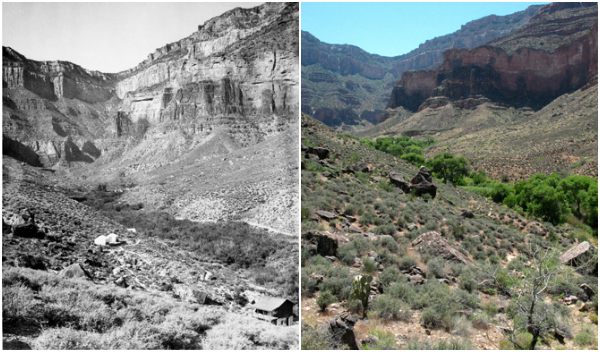A new partnership between Cline Library and the Southwest Experimental Garden Array will use repeat photography to document earlier ecological and environmental conditions at garden sites distributed throughout northern Arizona to research how species respond to climate change and land-use management.
“By comparing historical and contemporary photos, researchers can literally see how the plant community is changing over time, which is tremendously valuable,” said Thomas Whitham, SEGA’s principal investigator and NAU Regents’ Professor. “For example, repeat photography allows us to identify plants that were historically present that may now be gone and new plants that have moved into a site.”
Cline Library’s extensive photographic collection, which includes images that date back to the late 1800s, will be searched to identify photographs of the garden sites. Once historical images are identified, repeat photographs will be taken of the garden sites and their surroundings.
“This partnership highlights the importance of integrated research and the value of historical photographic collections,” said Peter Runge, the head of NAU’s Cline Library and Special Collections and Archives. “Our more than one million photographs can shed light on not only the region’s changing natural environment but also on ongoing cultural and land-use changes.”
The Dorothy T. and James J. Hanks Cline Library Endowment will provide a stipend to an NAU undergraduate or graduate student to undertake the project. Cline Library is the repository of about 450 photos taken in 1927 and 1928 by James J. Hanks in northern Arizona and southern Utah, and the endowment was created by his children to honor their parents and support students working on repeat photography projects.
SEGA is a genetics-based research facility made up of 10 gardens along the elevation gradient in northern Arizona that was made possible with support from the National Science Foundation and NAU. Because temperature and moisture change predictably with elevation, SEGA allows researchers to grow plants in conditions that range from desert to alpine forests to mimic the effects of climate change, which can then be used to identify the superior stocks that will survive in a changing environment. Molecular genetics, remote sensing and other advanced technologies are used to measure how plant communities respond to these varied conditions.



